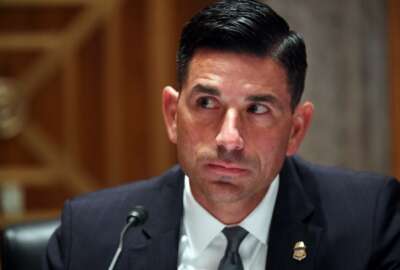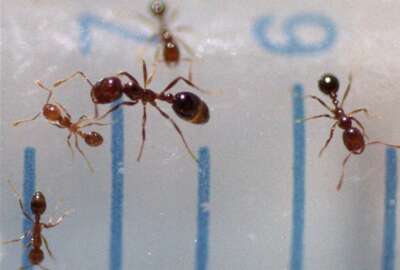
Federal IT appeals to the kids
So many of my former sources' kids are now in the market, I'm declaring a trend.
Federal information technology, I’ve found, is something of a family affair. The kind of work children follow their parents into. How do I know? I’ve been following this market for long enough that I’ve had dealings with grown children of people I knew and wrote about years earlier.
Once might be a coincidence. Twice, and the statisticians warn you not to equate two incidents with a trend. But how about five times?
Millions of people have streamed into IT in the past 30 or 40 years, roughly since the PC became a common household appliance and IT itself exploded into every sphere of life. I used to run into the son, roughly my own age, of the couple that owned the camera shop in the town where I grew up. He didn’t take over the family store with the Kodak clock, but instead chose a career in commercial IT sales and marketing.
My first “oh-my-gosh-that’s-your-dad?” encounter happened three years ago at the ACTIAC Executive Leadership Conference. I met Crystal Philcox, now an assistant commissioner at General Services Administration Federal Acquisition Service. I wrote then about my surprise, having known her dad Hank, an early chief information officer at the IRS. Under his watch, the IRS established data networks that ended the practice of shipping mainframe computer tapes from city to city on 727s so computers could be synchronized.
Well, it’s happened a few more times lately.
Earlier this week I conducted a panel discussion on behalf of Ciena, a networking vendor. One of the panelists was Andrea Norris, the CIO of the National Institutes of Health. Turns out her son is a freelance client of mine, a marketing manager at a federal IT market reseller. The day before the panel, Brandon remarked, “You’re going to be talking to my mom tomorrow.” I thought, huh?
Another panelist was Mike Mestrovich, principal deputy CIO at the State Department. Gosh, that name sounded familiar. So I asked. Sure enough, he is the son of Michael J. Mestrovich, a long-serving Defense Department IT executive I interviewed on several occasions a while back. He was a regular, if I remember correctly, at the GCN Banquet I used to emcee. I also remember him as a formidable intellect, a quality his son inherited.
I’m beginning to see a pattern.
One of my first contacts upon moving to Washington in the early ’90s was PR practitioner Fern Krauss, who had many clients in the federal IT market. She opened some early doors for me in my new domain. We became friends until, alas, I conducted ceremonies at her memorial service a few years ago. But I am in touch occasionally with her sons. Steve is active in the ACTIAC and AFCEA groups, and joined GSA a few years ago after a career in, of course IT. David works at panel sponsor Ciena.
Small world.
Last month, another panel discussion I moderated included Air Force Brig. Gen. Chad Raduege, the the Director of Cyberspace and Information Dominance and Chief Information Officer. In arranging that with Air Force public affairs, I thought, Raduege — could it be? Yep, Chad is the son of retired Air Force Brig. Gen. Harry Raduege, who had a long list of information technology posts. He went on to a great post-military career. Both father and son had stints in White House communications. Chad relayed that his dad said hello. Hi, Harry.
Because so many of the “kids'” parents are still doing relevant work, or the next generation has followed them into the market, these encounters got me thinking about the motivations for work or retirement.
The post government career for many federal executives can go on for years, into old age. I mean, old age. Many retire long before they’re out of ability or desire to work, and industry beckons them. But I suspect another reason they keep working is that the sense of relevance, of being in the swim, drives people. Another factor is that IT, as a topic, is unfailingly interesting. Many fields are, the more you know about them. I have a long-time friend who became an expert in the plastics industry after editing one of its trade magazines in the 1980s — a few years after “The Graduate”—and he still writes about plastics today.
If nothing else, the federal IT market engenders associations, some of which turn to friendships, and people don’t want to lose those. And if the work inspires the next generation, so much the better. In the end, what have we got but our people?
Nearly Useless Factoid
By Alazar Moges
Since the British Centurion main battle tank (MBT) was introduced in 1945, all British tanks and most armored fighting vehicles have been equipped with facilities for making tea. The official name of this facility was Vessel Boiling Electric, but it is usually abbreviated to Boiling Vessel (BV). It was unofficially known as a kettle or bivvie. The device draws power from the vehicle’s electricity supply and permits the crew not only to make tea, but also boil water or cook food.
Source: History.info
Copyright © 2025 Federal News Network. All rights reserved. This website is not intended for users located within the European Economic Area.
Tom Temin is host of the Federal Drive and has been providing insight on federal technology and management issues for more than 30 years.
Follow @tteminWFED





